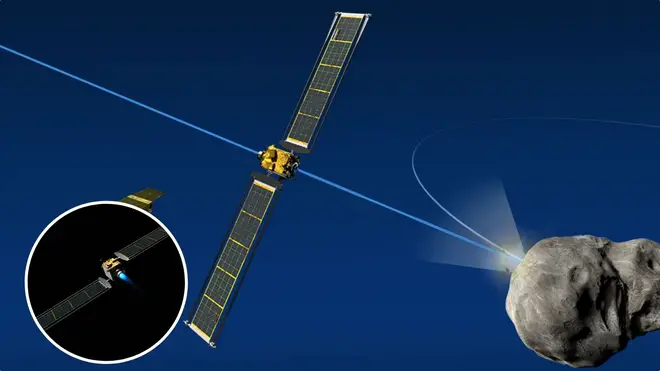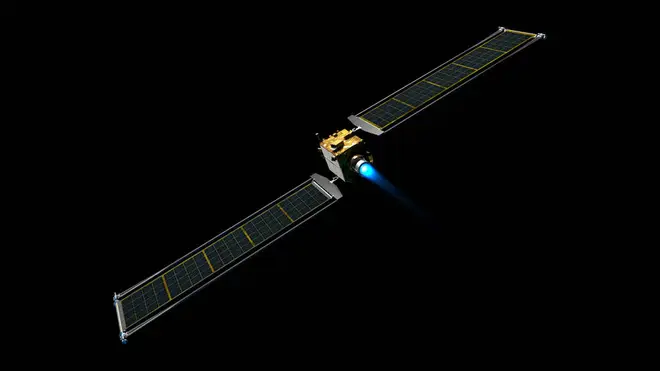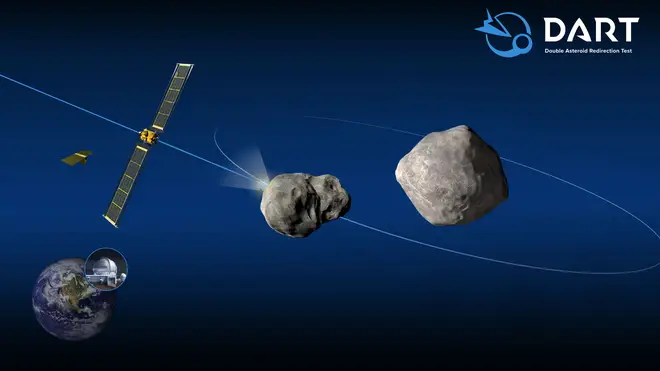
Clive Bull 1am - 4am
22 November 2021, 23:07 | Updated: 22 November 2021, 23:56

Nasa is about to test if it can throw a threatening asteroid off course by crashing a spacecraft into it.
In a plan that conjures memories of Hollywood blockbusters Deep Impact and Armageddon, the US space agency wants to see if it could stop an asteroid from smashing into Earth.
But the test is far more sophisticated than convoluted plot-lines that see oil rig workers drill open cosmic rocks to Aerosmith tracks.
Nasa wants to see if a spacecraft can autonomously fly to an asteroid and crash into it at the speed of about four miles a second.
It has christened the idea "Dart" – the double asteroid redirection test.
Read more: Odds of asteroid Bennu hitting Earth higher than previously thought - Nasa
Read more: Nasa's Mars Perseverance rover sends fascinating first colour images to Earth

The target does not actually pose a threat to Earth. Instead, Nasa has chosen an asteroid moonlet called Dimorphos, which orbits a bigger asteroid name Didymos.
The collision should change the moonlet's speed as it orbits Didymos by a fraction of 1% - but this is enough to change its orbital period by several minutes, enough for telescopes on Earth to observe and measure it.
Nasa thinks this is the best way to test if smashing a spacecraft into an asteroid would be able to get one to change course, if Earth is ever threatened by one.

The agency said: "Dart is a planetary defence-driven test of technologies for preventing an impact of Earth by a hazardous asteroid.
"Dart will be the first demonstration of the kinetic impactor technique to change the motion of an asteroid in space."
Dart is due to take off from 6.20am on Wednesday, US time, at Vandenberg Space Force Base in California. A SpaceX Falcon 9 rocket will blast it into space.
Dart will use solar arrays to power its xenon thruster, a commercial solar electric propulsion system.